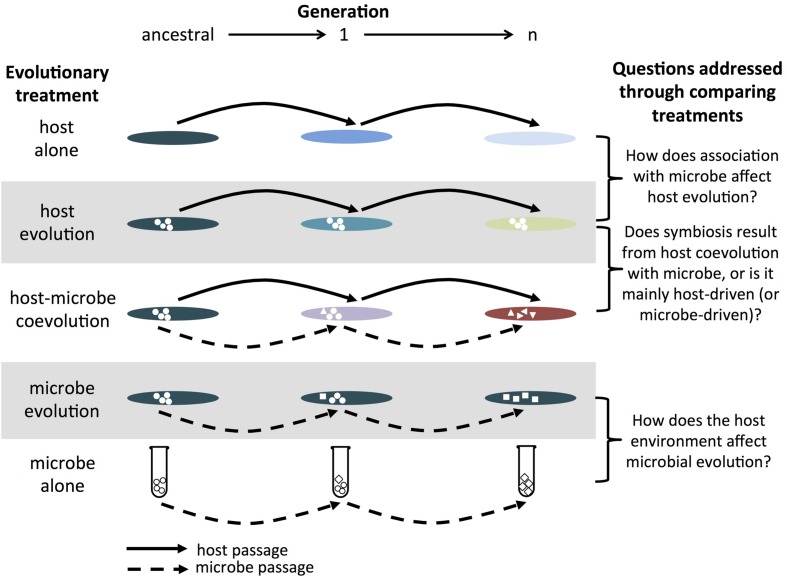FIGURE 1.
Example of host–microbe experimental evolution experiment. The host alone treatment consists of passaging the host without the microbe (and vice versa for the microbe alone treatment). The host evolution treatment consists of passaging the host in the presence of a non-evolving microbe (and vice versa for the microbe evolution treatment). The host–microbe coevolution treatment consists of passaging hosts and microbes that have interacted with each other in the previous generation. In combination, these treatments allow researchers of symbioses to assess the effects of partner association and coevolution on the evolution of hosts and microbes. While a single replicate of each treatment is shown for simplicity, replicate populations within each treatment are critical in order to evaluate the relative roles of deterministic and stochastic processes. The greater the contribution from stochastic processes, the greater the degree of divergence between replicate populations. Note, this is a similar set-up as that proposed for studying host-parasite coevolution in Brockhurst and Koskella (2013).

